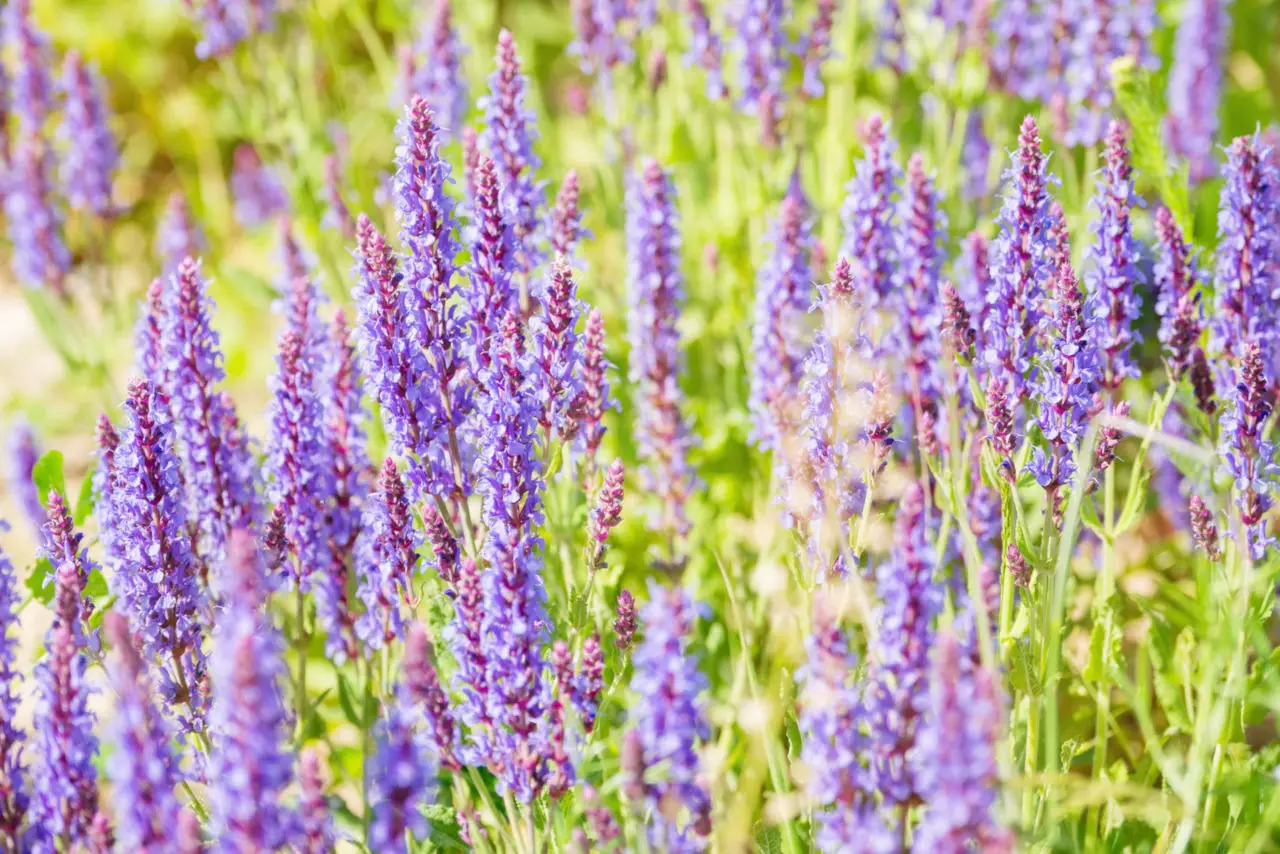At a glance
Woodland sage is often hardy to -25°C, but not all varieties tolerate frost equally. Protect hardy varieties in winter with a thin layer of brushwood, leaves or straw. Non-hardy varieties should be overwintered in a cold house or greenhouse.
Since not all varieties of woodland sage (Salvia nemorosa) are equally hardy, you should clarify this question right when you purchase. Either your dealer or gardener knows the answer, or the plant should be provided with an informative label.
Winter-hardy varieties of woodland sage can tolerate frosty temperatures down to -13 °F (-25 °C), at least for a while. You usually do not need protection from nighttime frost in a reasonably mild area.
Too much moisture can do far more damage to the steppe sage, though. It is best to overwinter non-hardy varieties in a cold, but not frosty house or similar conditions.
How Do You Winterize Woodland Sage?
If you have already pruned your hardy woodland sage in the fall, take the precaution of protecting the plant from heavy frost. To do this, cover it with a thin layer of brushwood, dry leaves, or straw.
As soon as it gets a little warmer again, you should remove this protective layer immediately, so that the plant does not suffer from fungal attack due to prolonged moisture.
It is easier to prune the steppe sage only in the spring because at that time its own foliage can protect it from the rigors of winter.
How to Care for Woodland Sage in Winter?
Winter-hardy plants in the garden bed are less likely to freeze than to die of thirst. To prevent this danger, water your woodland sage a little now and then during the frost-free period.
Keep in mind that too much moisture can harm it just as much as too little. When provided with too much water, it easily comes to fungal attack or the plant rots. However, complicated care is not required.
Non-hardy woodland sage is best planted in pots or planters. Place these in a cold house, unheated conservatory, or greenhouse for the winter, so that they can overwinter there frost-free. Do not fertilize them at all during this time, and limit watering a little.
If you want to find out more about the woodland sage, have a look at our woodland sage complete guide!
The Most Important Winter Tips for Woodland Sage
- It is often hardy to -17 °F (-25 °C)
- Not all varieties are hardy
- Overwinter non-hardy varieties indoors or in a greenhouse
- Do not fertilize in winter and water little
- Protect from standing moisture
Good to know
Plant non-hardy varieties of woodland sage right away in planters or pots, then you won’t have to dig up these perennials in the fall and transfer them to pots for overwintering.

